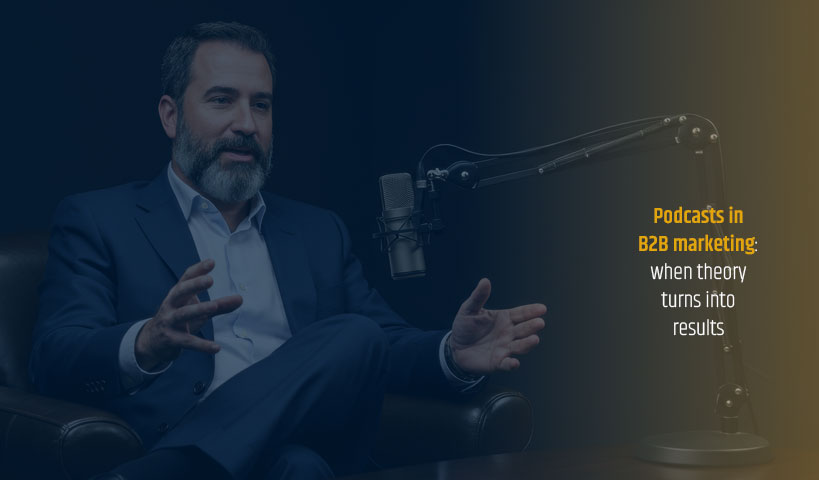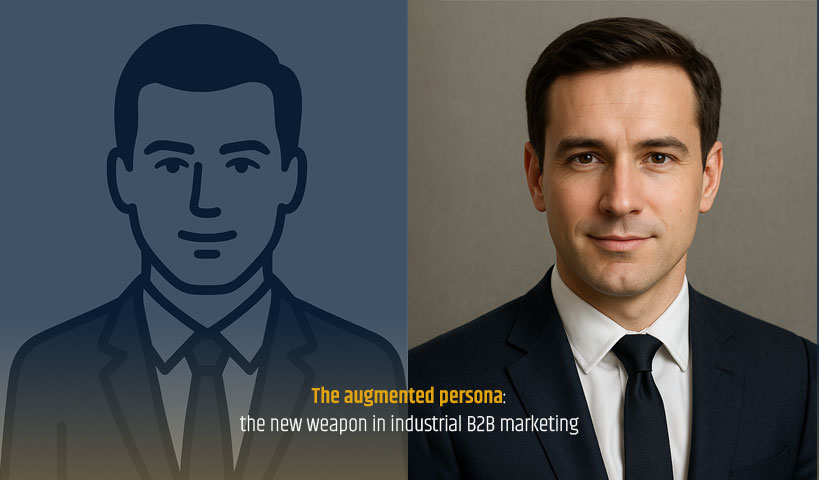
It’s no longer a secret for anyone; in this day and age, any company into business-to-business marketing aiming to become a LEADER in their field of expertise, with several years of experience in R&D and, the sale of their products which are often manufactured, must assert this fact in the face of its target audiences (partners, customers, employees and shareholders) and to do so, can’t only rely on traditional tactics, including good old ‘Trade Shows’ in order to collect ‘Leads’.
The 21st Century company must make strategic choices: one of which is to assert its dominance on several main axes, particularly, those of product or service and innovation leader and, to proceed as quickly as possible with its own digital transformation to ensure dominance and leadership. As experts in marketing strategies, ExoB2B recommends, in some cases, to assert itself as such through an inbound or inward marketing strategy, to demonstrate thought leadership and, to be integrated into a process of digital transformation.
Hence the importance of planning and establishing its presence in social media and engaging in a relationship of trust, based among other things, on the production of high-quality content that supports its traditional offer and, an openness to socio-professional interactions. (see below).
Taken from the study «The Evolution of Social Business: Six Stages of Social Business Transformation», by Altimeter Group
The Thought Leadership approach according to ExoB2B
Thought leadership is characterized, among other things, by a steady and sustainable production of innovative content and analysis. No company can claim it without being deeply rooted in its practice, in its organization and in its culture. This implies investing resources and valuing it in its current management.
Here is another rather similar definition from MSI specialist, Michael Brenner: «I define thought leadership as a type of content marketing where you tap into the talent, experience, and passion inside your business, or from your community, to consistently answer the biggest questions on the minds of your target audience, on a particular topic.»
To do this, the most commonly used content vehicles are:
- White papers
- Webinars
- Customer case studies
- Blog posts and other articles
- Graphics
- Slideshows or other similar presentations
- Videos and podcasts
The ability to decipher trends is no longer enough. You must know how to influence them in the near future. Show a path that 90% of market players have not even identified as being possible. Did you say risk-taking? Yes! It’s not enough that the content is innovative or even unique. It must draw a path.
A company will therefore be recognized as a “Thought leader” in its market only if it claims to own a unique point of view, shaking the ideas received. And that other actors will gradually adopt. What’s the use of showing the way if you are not followed?
Any inbound marketing strategy responds to a process defined in its nature and in time. The latter corresponds to the best practices of the industry and applies to any improvement process. In communication, we talk about transmitters, channels and receivers. Here, the process is a little more complex:
In the “desired outcome”, we find the vision, goals and objectives that we want to give ourselves. The personality and voice are “you” or, what characterizes you. These are the audiences that are targeted in our innovative approach but also, in a strategy that appeals to the media and social networks. We must also clearly identify which influencers will help us to achieve this approach. Next is the action plan. Once realized, the latter will have to be measured, evaluated and if necessary, improved or even reinvented. The process is therefore defined in its nature but still open to evolution at the same time.
For the purposes of the thought leadership approach, this is the backbone that will serve as a table of contents for your strategy. We must therefore first define:
- The vision, goals and objectives
- The personality and voice of the company
- The public
- Segmentation
- Influencers
- Communities
- Competition
- The action plan
- Projects
- Channels
- Content
- Resources
- Schedule
- Search Engine Optimization (SEO) / Indexing
- Performance indicators
The importance of media and social networks
Now let’s go back to the channels used to convey the forms of content most often used that we defined previously. Obviously, the trending ones are social networks.
In a recent study published by Social Media Examiner, we discovered that in 2018, LinkedIn isn’t the preferred social platform to disseminate content in B2B. Facebook is. This study is based on data from a survey of 5,726 marketers working in a wide range of companies.
LinkedIn is a close second at 79%, unexpectedly followed by Twitter at 70%. Unsurprisingly, SnapChat is last with a meager 7%. According to a recent article in The Verge, Snapchat is a declining platform. When it comes time to identify the main benefits of using social networks in B2B, there’s no surprises. The main benefit according to 87% of respondents is greater visibility. Increase in traffic and lead generation were also cited. Tthought leadership is last with 46%.
On the other hand, the researchers have an explanation for this low relative performance. Indeed, because thought leadership relies on more effort and experience, only the most experienced marketers implement it successfuly.
This is a complex universe to understand. The goal is to do business, as well as to facilitate the purchase and sale of products and services. It also often consists in disseminating knowledge to make business happen. This doesn’t mean it can’t be fun. But in the end, it’s all about business.
It’s imperative to proceed methodically, to follow a plan, and to develop a project linked to corporate and business objectives. The 7 main types of projects in the media and social networks should serve as basis to direct your efforts:
- Join or create a community
- Reach out to influencers
- Become the influencer – Leadership
- The Buzz
- Ambassador Program – Employee
- Ambassador Program – Customer
- Crisis Management
In the seven Social Media projects types, we find thought leadership. This enables companies to increase their notoriety, credibility or reputation. It helps them assert their personality and voice. It allows them influence their target markets with the innovative aspect their ideas, with their originality and their skills. Under these conditions, the project becomes the recognized and perennial expression of the intellectual assets of the company and its achievements. This is a powerful leverage for more sales!
Want to lean more on this topic? Contact us to include it your next content strategy.









